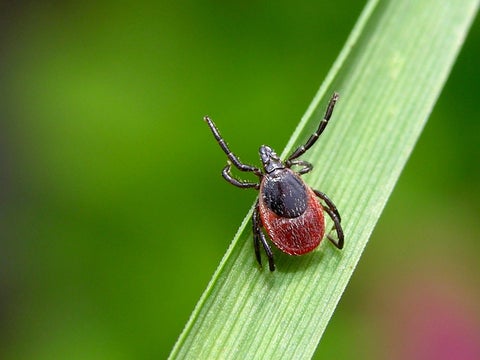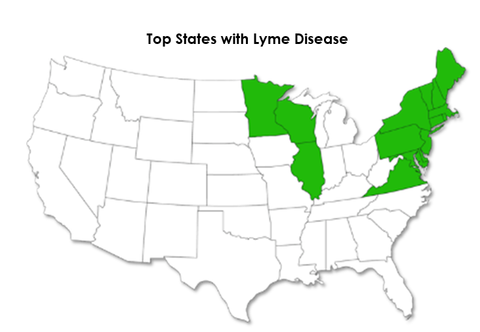Arm yourself: 6 key points you may not know about ticks

With the rising incidence of tick-borne illnesses, it’s becoming important to get smart about protection from tick bites.
That said, several misconceptions still exist about deer ticks, the creepy crawlers responsible for transmitting an estimated 300,000 cases of Lyme disease annually, in addition to other serious diseases such as anaplasmosis, ehrlichiosis, babesiosis. and Powassan virus. But the bottom line is, the more you know about the threats posed, the better you can protect yourself, your family and your pets from an infection.
“When it comes to ticks, ignorance is the opposite of bliss,” writes Maria Masters on Health.com. “Start reading up on what ticks look like, where they camp out and what to do if one latches onto you. Developing an action plan now can potentially save you from a lot of suffering in the future.”
With that in mind, here are key facts about deer ticks that most people don't realize.
-
Your state of residence makes a difference. Ninety-six percent of Lyme disease cases are concentrated in 15 states in the Northeast, Mid-Atlantic and Northern Woods regions: Connecticut, Delaware, Maine, Maryland, Massachusetts, Minnesota, New Hampshire, New Jersey, New York, Pennsylvania, Rhode Island, Vermont, Virginia and Wisconsin

-
Deer ticks are the major culprits. While a number of different kinds of ticks live in the U.S., a CDC study shows black-legged or deer ticks were responsible for more than 89 percent of tickborne disease in the continental U.S. between 2004 and 2017. Topping the state list of reported tick-borne illness last year was Pennsylvania with 73,610 cases, followed by New York, New Jersey, Massachusetts and Connecticut.
-
They’re not just in the wild; they're in your backyard. In fact, 75 percent of people get Lyme within 100 feet of their house, according to the CDC. Because ticks prefer shady areas with low-lying vegetation, there's a good chance they're lurking right in your yard. That's why it's important to keep them away by mowing frequently, creating barriers between wooded areas and your lawn, removing hiding places and strategically spreading Thermacell Tick Control Tubes around the perimeter of your yard.
-
Deer ticks can be minuscule. Most humans are infected through the bites of nymphs which are immature ticks only about 2 mm in size (comparable to a poppy seed). In fact, they’re often mistaken for specks of dirt, especially when they’ve burrowed into the skin.

-
May through August is the riskiest time for Americans. A 2001-2017 CDC study shows cases spike significantly in June and July.
- They can hide on your pets. The little parasites typically climb up shrubs or blades of grass, then hitch a ride on your pet as it brushes against the foliage. Dogs and cats are both subject to tick-borne illnesses including Lyme, which is why they should be checked daily for ticks in the spring, summer and fall, or year-round in warmer climates.
